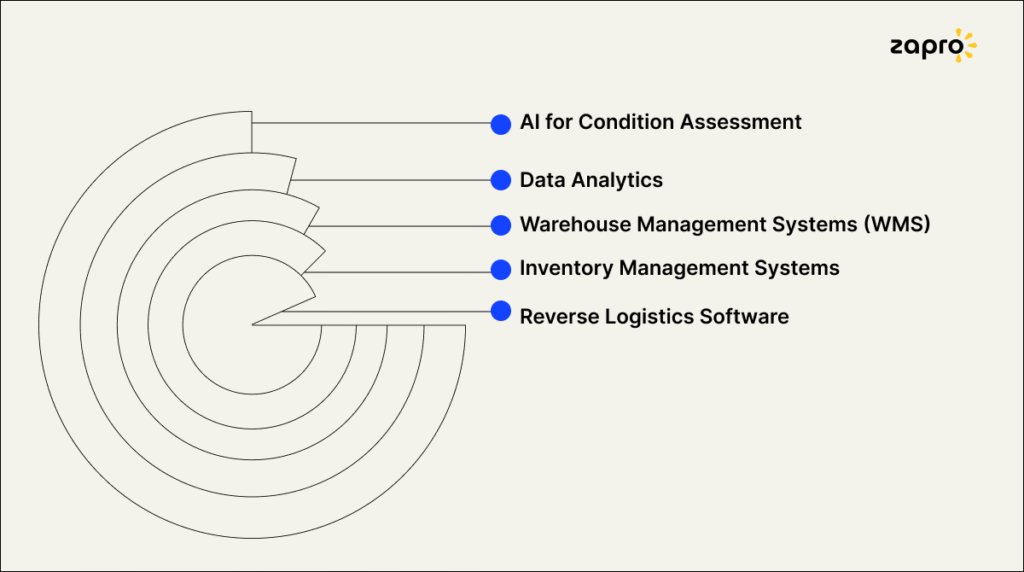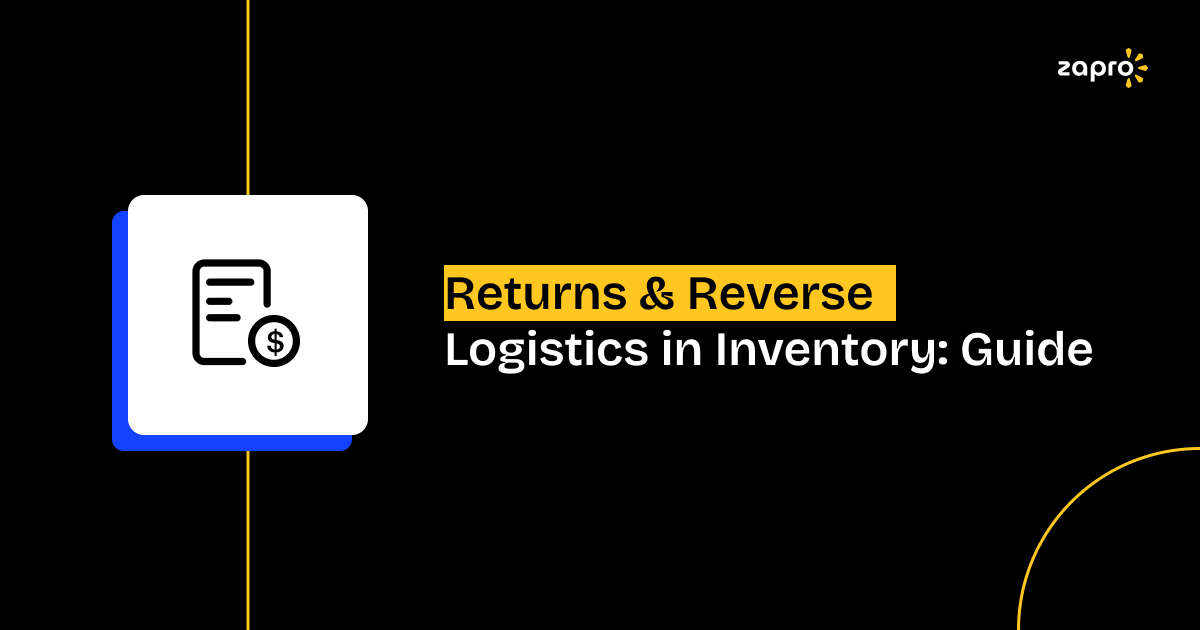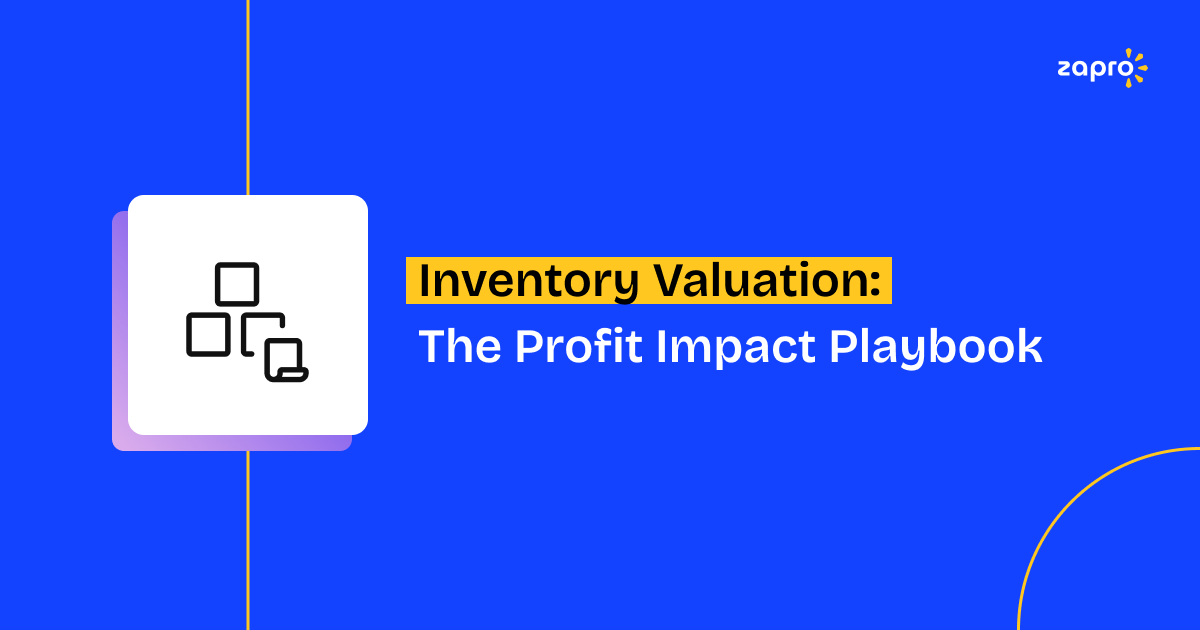In the current digital commerce environment, returns along with reverse logistics have evolved from simple operational procedures into essential components of inventory and supply chain operations. Every e-commerce leader, inventory manager, and operations manager must handle returns efficiently, as it functions as a competitive advantage.
This document examines basic concepts, emerging trends, and effective methods for reverse logistics and return management systems. The guide demonstrates how to leverage Zapro.ai, along with end-to-end visibility and automation tools, to maximize returns profitability.
What is Reverse Logistics? Definition and Scope
The reverse logistics process brings products from their end destination—usually with customers—back into supply chain operations for returns, refurbishment, recycling, or disposal purposes. The management of goods after sales takes center stage in this process, instead of focusing on forward logistics.
This includes:
- Product Returns
- Repairs and Warranty Management
- Recycling and Disposal
- Refurbishment and Remanufacturing
The process impacts stock levels, fulfillment timelines, and warehouse space utilization, requiring inventory operations to maintain supply chain efficiency.
The Rising Challenge of Returns in Modern Commerce
E-commerce operations have led to a substantial increase in return volumes across the board. The convenience of no-questions-asked returns now expected by consumers leads to significant expenses for merchants.
The National Retail Federation reports that U.S. retailers handled $743 billion in returns throughout 2023, with online returns ranging between 18% and 20%. These numbers represent multiple expenses, including restocking costs, lost sales potential, reverse shipping fees, and potential product degradation.
The practice of returns has become a profitability drain that demands immediate remediation.
Key Strategies for Efficient Returns Management
1. Clear Returns Policies
When companies provide clear returns policies, customers know what to expect, leading to fewer issues in operations. Well-documented return policies—defining acceptable conditions and outlining step-by-step procedures reduce customer service calls and disputes.
2. Streamlined Returns Authorization (RMA)
A Return Merchandise Authorization (RMA) system provides systematic tracking and validation of returns, enabling efficient processing. Automating RMA workflows reduces errors and accelerates the reverse supply chain.
3. Dedicated Returns Processing Centers
Organizations implement dedicated Returns Processing Centers (RPCs) as centralized facilities. These centers create efficient systems for product sorting and inspections, leading to faster processing and reduced storage costs.
4. Automated Sorting & Disposition Workflows
Technology enables automatic categorization of returned products:
- Restock: Like-new items ready for resale.
- Repair/Refurbish: Items requiring minor fixes or touch-ups.
- Recycle/Scrap: End-of-life goods.
- Donate/Liquidate: Unsellable inventory repurposed or offloaded.
5. Pre-Paid Shipping Labels & Drop-off Options
Enhancing customer convenience leads to faster returns and fewer disputes. QR code-based drop-offs, automated labels, and multiple return options improve customer experience while keeping the process under control.

In e-commerce, the returns experience is as critical as the initial purchase. A seamless reverse logistics process can turn a potentially negative experience into a positive, loyalty-building touchpoint.
Maximizing Value Recovery in Reverse Logistics
Every return doesn’t have to be a loss. The correct approaches enable businesses to transform unwanted items into valuable stock which can be sold again.
• Restocking: Returns that are as good as new can go straight back into sellable inventory.
• Refurbishment/Repair: Slightly damaged or used items can be reconditioned.
• Remanufacturing: Recover valuable components or parts.
• Recycling: Extract raw materials to be reused or resold.
• Donation/Liquidation: Find a secondary market or a charitable outlet.
This approach supports circular economy principles, emphasizing waste reduction through intelligent product reuse and value extension.
Brands increasingly adopt closed-loop logistics models to reduce landfill impact and boost sustainability efforts.
The Role of Technology in Reverse Logistics & Inventory

Modern returns management depends heavily on technology for efficiency and transparency. Key tools include:
1. Reverse Logistics Software
Manages the complete return cycle from RMA approval to final disposition while maintaining full visibility and control.
2. Inventory Management Systems (IMS)
Tracks returned stock and provides real-time inventory data, aiding restocking and liquidation decisions.
3. Warehouse Management Systems (WMS)
Improves warehouse space usage and workflow efficiency for returns handling.
4. Data Analytics
The platform delivers information about product returns along with details about quality defects and potential instances of fraudulent activities. Enables data-driven decision-making.
5. AI for Condition Assessment
Machine learning and computer vision assess the condition of returned items automatically, improving speed and accuracy.
How Zapro.ai Optimizes Returns & Reverse Logistics in Inventory
Zapro’s Smart Inventory Management Platform
Zapro.ai transforms how companies handle returns and reverse logistics by integrating seamlessly into your existing systems.
Zapro.ai helps businesses:
- Automate RMA workflows.
- Track every returned item from initiation to final disposition.
- Identify return patterns using embedded analytics.
- Recover value through intelligent sorting and resale management.
Visit Zapro’s Inventory Solutions to explore real-world applications.
Zapro’s Features for Streamlined Returns Management
- Returns Modules: Built-in tools for initiating, tracking, and completing returns.
- Custom Disposition Workflows: Tailor return processes based on product type, condition, or origin.
- Integrated Portals: Allow customers or staff to initiate returns via connected interfaces.
- Actionable Reporting: Real-time dashboards on return rates, costs, and recovered value.
Explore Zapro Features to see how these tools reduce manual effort and increase operational agility.
Case Study: BrandCo Reduces Return Processing Costs by 35% with Zapro.ai
Company: BrandCo (Hypothetical Mid-Market Apparel Retailer)
Challenge: High volumes of apparel returns, manual inspection, and long turnaround times.
Solution: Implemented Zapro.ai for automated RMA and AI-powered grading.
Results:
- 35% reduction in processing costs
- 28% increase in recovered value
- 15% improvement in customer retention rate
Visit Zapro Case Studies for more success stories.
Calculating the ROI of Efficient Reverse Logistics with Zapro.ai
Zapro.ai allows organizations to determine the return on investment (ROI) achieved by implementing efficient reverse logistics systems.
The implementation of optimized reverse logistics systems produces advantages which extend past reducing operational costs.
| KPI | Before Zapro.ai | After Zapro.ai |
| Return Processing Cost (Avg) | $12 per item | $7.80 per item |
| Value Recovered (Avg) | 40% | 68% |
| Customer Support Tickets (Monthly) | 450 | 310 |
| Customer Satisfaction (CSAT) | 78% | 89% |
Choosing the Right Inventory System for Robust Returns Management
When selecting an inventory platform with strong reverse logistics features, look for:
- RMA Workflow Integration
- Granular Tracking of Return Reasons and Status
- Automated Disposition Capabilities
- Compatibility with WMS, TMS, and ERP
- AI and Analytics for Continuous Improvement
Explore unbiased reviews on platforms like Gartner or G2.
Why Zapro.ai is Your Partner for Smart Returns & Inventory Control
The platform serves as a strategic partner beyond its status as a platform. The complete range of Zapro capabilities supports businesses from procurement software through returns to achieve:
- Improve inventory visibility
- Automate reverse logistics workflows
- Maximize recovery from returns
- Elevate customer experience
- Minimize waste, aligning with sustainability goals
Visit Zapro.ai for a personalized demo.
Final Thoughts
Returns and reverse logistics have evolved from cost centers into opportunities. Platforms like Zapro.ai help businesses reduce losses, boost value recovery, and build customer loyalty—turning operational challenges into strategic advantages.
Turn Returns into Revenue with Smarter Reverse Logistics.

Frequently Asked Questions (FAQs)
1. What is a Return Merchandise Authorization (RMA)?
RMA is used to track and approve returns which enables businesses to validate and monitor returned items before receiving physical possession.
2. How do returns impact inventory accuracy?
When returns remain untracked or experience delays it produces inventory mismatches which causes demand forecasting inaccuracies and results in stockpiling.
3. What are the environmental benefits of efficient reverse logistics?
Companies achieve reduced landfill waste through recycling and refurbishment operations while aligning their practices with circular economy principles.
4. How can e-commerce businesses minimize returns?
Online product descriptions that include size guides together with AR/VR try-ons and post-purchase support systems reduce the number of returns.
5. What is the role of quality control in processing returned goods?
Quality inspection procedures decide the fate of returned items by determining their suitability for restocking or repair or their need for disposal which impacts the recovery value.
6. How does omnichannel retail complicate returns management?
Different return points (stores, online, marketplaces) require a unified system to track, process, and manage returns centrally.
Don’t miss our weekly updates
We’ll email you 1-3 times per week—and never share your information.

 Healthcare
Healthcare Financial Services
Financial Services Technology
Technology Venture Capitalist
Venture Capitalist Chief Procurement Officer
Chief Procurement Officer Chief Financial Officer
Chief Financial Officer




